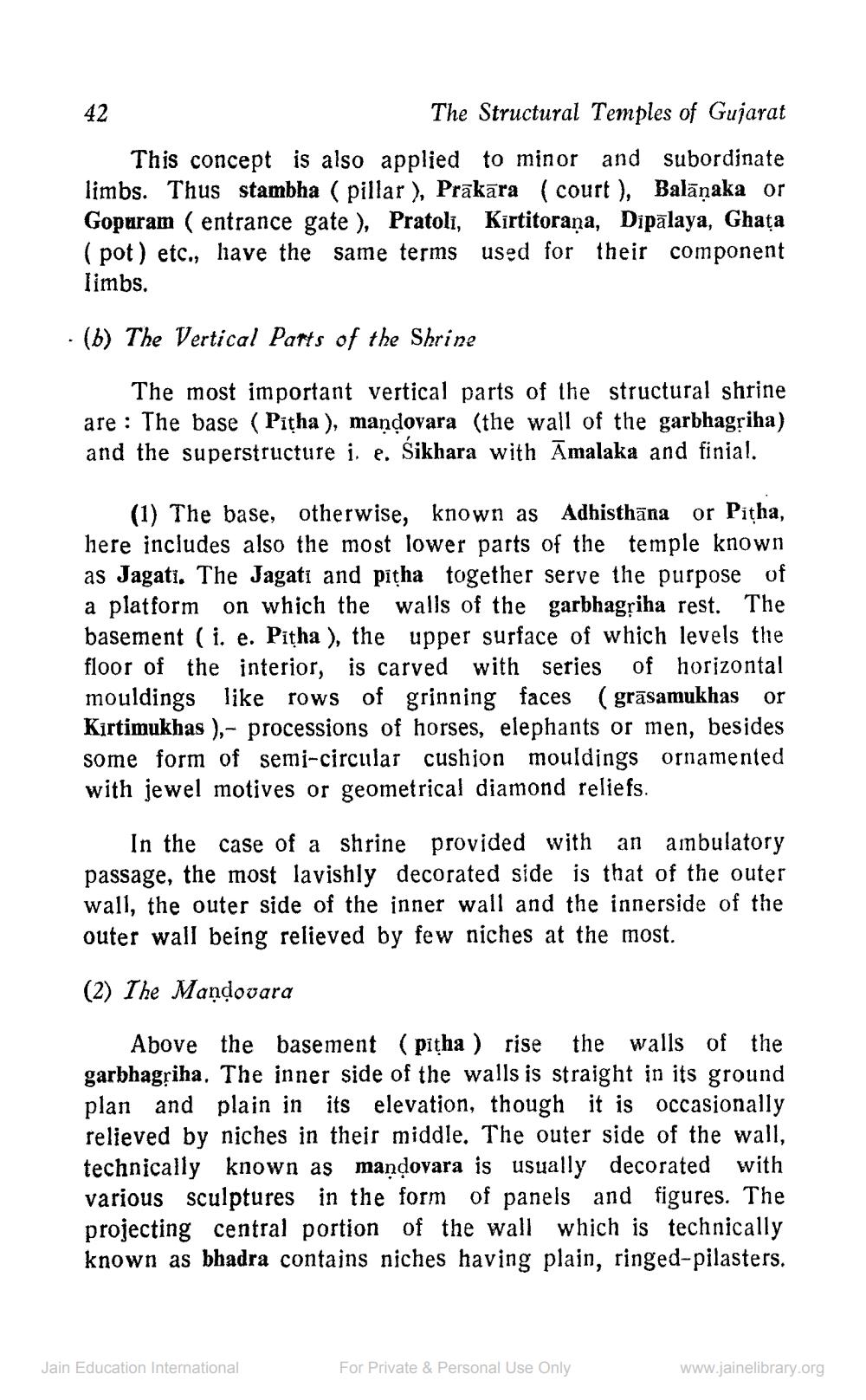________________
42
The Structural Temples of Gujarat This concept is also applied to minor and subordinate limbs. Thus stambha ( pillar), Prakāra (court ), Balāņaka or Gopuram ( entrance gate ), Pratoli, Kirtitoraņa, Dipālaya, Ghața (pot) etc., have the same terms used for their component
limbs.
(b) The Vertical Parts of the Shrine
The most important vertical parts of the structural shrine are : The base (Pitha ), mandovara (the wall of the garbhagriha) and the superstructure i. e. Sikhara with Amalaka and finial.
(1) The base, otherwise, known as Adhisthāna or Pitha, here includes also the most lower parts of the temple known as Jagati. The Jagati and pītha together serve the purpose of a platform on which the walls of the garbhagļiha rest. The basement (i. e. Pitha ), the upper surface of which levels the floor of the interior, is carved with series of horizontal mouldings like rows of grinning faces (grāsamukhas or Kirtimukhas ),- processions of horses, elephants or men, besides some form of semi-circular cushion mouldings ornamented with jewel motives or geometrical diamond reliefs.
In the case of a shrine provided with an ambulatory passage, the most lavishly decorated side is that of the outer wall, the outer side of the inner wall and the innerside of the outer wall being relieved by few niches at the most.
(2) The Mandovara
Above the basement (pitha ) rise the walls of the garbhagļiha. The inner side of the walls is straight in its ground plan and plain in its elevation, though it is occasionally relieved by niches in their middle. The outer side of the wall, technically known as mandovara is usually decorated with various sculptures in the form of panels and figures. The projecting central portion of the wall which is technically known as bhadra contains niches having plain, ringed-pilasters.
Jain Education International
For Private & Personal Use Only
www.jainelibrary.org




